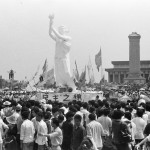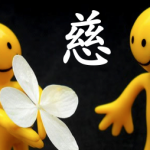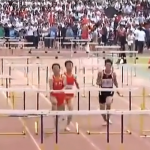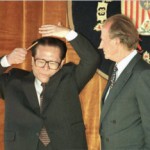The new documentary film Diamond in the Dunes, directed by Christopher Rufo (free streaming on PBS until September 8 for those with VPNs), tells the coming-of-age story of a Uyghur man named Parhat as he finds his way through college. It shows us how he and his Uyghur and Han classmates at Xinjiang University develop a passion for a game, for abilities and skills that don’t rely on ethnicity or Chinese business connections. It shows us how the citywide riots of 2009 shaped their life-paths and how they found ways to move forward despite the difficulties of their circumstances.
Parhat tells this story by showing us how he motivated his fellow players to think beyond themselves and their abilities to speak and act. Even though he lacks the words to fully express what he feels in Chinese, he tries; even though his team has little support and little training in how to play, they try.
Parhat knows what it means to experience feelings of lack — of not being good enough — but he also knows what it means to turn those same feelings into a source of motivation and courage.
Parhat feels as though many Uyghurs lack long-term vision and self-confidence; he feels as though many of them have internalized feelings of depression and defeat. Each new round of violence reverberates in ever widening rings of fear and distrust. Each diverted life drags the lives around it toward feelings of hopelessness and invisibility.
Yet it is by traveling through the “double consciousness” of not being “good enough” to be an ideal Chinese citizen and not being free to be “good enough” as a Uyghur baseball star that he comes to a realization about himself: that standing outside of mainstream Chinese society can also be a way of transcending the circumstances he’s been handed. By learning to be both Chinese and “foreign” at the same time, he can draw on energy that is not available to a person who is more comfortable.
It is on this point that we hear Parhat repeating the moral lesson that many Uyghurs have heard from other Uyghurs: if only Uyghurs would work as hard as other Chinese they would succeed. Parhat tells a struggling Uyghur teammate to just think about how clumsy the Han players looked when they first started, but that through their ambition and tenaciousness they have become competent players. What the film does not quite show us is the way other Uyghurs usually jump in at this point and argue that the lack of vision is simply a symptom of the lack of opportunities that are available to young Uyghurs. Limits on travel, hiring, communication, and education, and the structural violence of extreme poverty, all have a role to play in what a Uyghur might experience as being “less than” other Chinese. But, for Parhat, listing these complaints is just not enough — it describes the cards Uyghurs have been dealt, it doesn’t define how the game of life might be played.
Although the feelings of absolute difference and antagonism between Uyghurs and Han seem insurmountable, the common language of a game, of teamwork, strategy, and skill offers a tenuous bridge across this divide. Even more interestingly for Parhat and the other Uyghur players, it opens a door to another world. Baseball becomes a limiting case of what is possible. Like the physics Parhat studies in school, it becomes a problem that demanded a solution.
In the film, the analogy of baseball to broader social life seems heavy-handed — after all, it’s just a game — and the successes we see seem underwhelming. But the documentary does demonstrate that although broader contemporary social forces invade nearly every aspect of life, people still find ways to thrive. Perhaps the film’s narrative could do a bit more to convey the rawness of personal struggle that accompanies the drama of coming of age in Ürümchi.
Even more concretely, the film doesn’t show the viewer the way Parhat organized a Uyghur Little League. It doesn’t show the viewer how those young Uyghur kids were scouted by American Major League Baseball and the Chinese Professional Baseball League in Taiwan, and how in the years following the filming of the documentary some of them were given full-ride scholarships to play on top Chinese high school teams as they are being groomed for professional careers.
Yet, despite these narrative gaps, the documentary is rare (given the current circumstance in Xinjiang) in the way it develops long-term intimacy with its characters as they change over the years. The access Rufo was able to gain by framing the film around a seemingly innocuous game like baseball opens up the sweep of time in Ürümchi through the small dramas of life.
If you meet Parhat today you would quickly discover that he is still a gregarious, passionate man who tends to see absurd humor in the circumstances he has been handed. He still teaches anyone who asks how to throw a curve ball, how to love baseball, and how to embrace the possibilities of being a minor actor in a Chinese world. He still tries to tackle the problems of life in Ürümchi with the same tenacity he demonstrates in the film.
Since the film was shot a few years ago, the success of the baseball team has continued to grow. They went to the championship of the China Collegiate World Series in 2010 and 2011, where they defeated the reigning national champions from Guilin Liuzhuan Daxue 8:0.
Until September 8, the 53-minute documentary film can be streamed for free from PBS (VPN needed – US location).
Beige Wind runs the website The Art of Life in Chinese Central Asia, which attempts to recognize and create dialogue around the ways minority people create a durable existence, and, in turn, how these voices from the margins implicate all of us in simultaneously distinctive and connected ways.

















































What a beautiful work. A real-life Field of Dreams with real complications, mostly universal. Thank you for the tip. No foul, though. A homerun.
It’s real life his story.Far better than Hollywood.United we stand,the world stands still today
The full-length version of the film is streaming for free here: https://vimeo.com/76566259